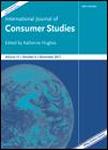版权所有:内蒙古大学图书馆 技术提供:维普资讯• 智图
内蒙古自治区呼和浩特市赛罕区大学西街235号 邮编: 010021

作者机构:Institute of Public Administration and Business WSEI University Lublin Poland Department of Economics Kozminski University Warsaw Poland Human Flourishing Program Harvard University Cambridge Massachusetts USA Institute of Psychology and Human Sciences WSEI University Lublin Poland Department of Quantitative Methods and Applications of Computer Science Kozminski University Warsaw Poland
出 版 物:《International Journal of Consumer Studies》 (Int. J. Consum. Stud.)
年 卷 期:2025年第49卷第4期
学科分类:120202[管理学-企业管理(含:财务管理、市场营销、人力资源管理)] 12[管理学] 0202[经济学-应用经济学] 02[经济学] 1202[管理学-工商管理] 020205[经济学-产业经济学]
主 题:financial literacy framing gender gender gap language wording
摘 要:We examine whether the phrasing of financial literacy test questions affects the test scores of women and men. To this end, we developed three language versions of a well-known set of financial literacy questions: feminized, masculinized, and neutral. We then surveyed a large, representative sample of adult Poles ( N = 4389), with respondents randomly assigned to one of these three language versions. Using item response theory (IRT), we examined how female and male respondents answered the questions and scored on the financial literacy test, depending on the language version. We found that both women and men performed differently contingent on the phrasing of questions. Through our analysis, we identified a subset of questions free from language bias. Utilizing this language bias-resistant set, we assessed financial literacy levels for both genders. Even in this language bias-resistant shortened test, a significant gender gap favoring men persisted, with a difference of 0.775 on the standardized scale. In a series of alternative models, we found that the gender gap in financial literacy was noticeably smaller when feminized language was used compared to both masculinized language and the language bias-resistant version of the test. This study confirms the existence of a gender gap in financial literacy but suggests that its magnitude may be overestimated when masculinized language is utilized in testing instruments.